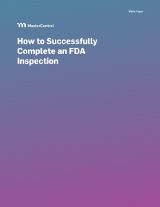
GxP Lifeline
"Can I get a Translation Please? Tips to Ensuring Productive Communications with Regulatory Authorities, Part Two"
Editor’s note: This is a two-part series. In part one, Andrea Artman provides three insightful tips on how to prepare your submission to best communicate with regulatory authorities. In part two, she covers best practices for successful interactions with a reviewer.
You’ve put together a high quality regulatory submission and it is now under review with your regulatory body. The review is a crucial part of the regulatory process, and generally takes place in a fast-paced environment. Each interaction and communication seems like a high stakes negotiation in a “foreign” regulatory language. You are left asking yourself, “Why can’t they just tell me what they want?”
In this post, we will discuss strategies for communicating with your review team to ensure you’re speaking a language that your regulatory authority understands, and more importantly, a language that can get your product to market!
Avoid Assumption About Presented Information
One pitfall that happens often during the regulatory review process is the business makes the assumption that the reviewer has read every page with a fine toothed comb and fully understands the information presented. This often manifests when a question is asked by the regulator that seem obvious to the company and was “clearly” documented in the submission. The company jumps to the conclusion that the information presented wasn’t adequate and scrambles to complete additional testing. But wait! Remember that the response may be as simple as directing the reviewer’s attention to a specific page and paragraph to note that the information was already provided. Like I’ll explain soon, these types of questions can often times be addressed during brief meetings with the regulator or through email. Using these forms of communication allows you to ask clarifying questions to ensure you are pointing them in the right direction without removing your ability to respond more thoroughly if the reviewer is actually looking for a more detailed response.
As an example, I’ve had several instances where a regulator has asked about an adverse reaction of an animal study involving a device. Their questions imply that this may be a safety or effectiveness risk related to the device under review. However, when I spoke with the company, I politely pointed them to a specific part of the documentation that explained the animal in question received the control therapy or the comparison therapy and not the therapy under review. Once this was cleared up through a simple discussion with the regulatory authority, the review was able to move forward.
With the amount of data presented, remember that some facts are easily missed or mixed up during the review process. It is ok, and welcomed, when you point these out because you avoid completing expensive and lengthy tests or analyses that are totally unnecessary. Sometimes the simplest answer is the correct one!
Take Advantage of Communication Opportunities
When a regulatory authority provides an opportunity to ask questions regarding their comments or additional requests, take them up on it! This is an opportunity to build rapport with the reviewer, but as always, maintain a professional tone and ensure you are concise with your communications.
Generally, if you are getting a letter with deficiencies, the requests are a little more in depth than something that can be resolved through simple clarifications. If you don’t have specific questions, discuss your planned response. You may get additional feedback on the adequacy of your planned approach.
Although these are informal conversations and generally do not include binding advice, you do want to make sure you are prepared for the meeting. Prior to requesting the meeting, plan out what questions (or responses) you have in a document that can be shared with the reviewer. This should be as polished as a formal submission to the regulatory authority, using the tips I provided in the first part of this series. Why you might ask? Well this informal response will be attached to the email that requests the meeting, and that document will end up in your review file.
Remember Your Reviewer is a Regular Person
I think many times people imagine the great and powerful Oz behind the curtain. Instead, think of them as another expert on your team or an external stakeholder. The more comfortable you become with interacting with the review team, the less stressful the process will be.
Remember that your reviewer is a regular person who is trying to do a great job, just like you! Just like you they have deadlines, competing priorities, and yes, bosses that may be hard to please. At times, like the one we are in now, the resources at the regulatory bodies are stretched thin. So while you may be frustrated with them at times, it is important to remember they are dedicated professionals, and at times may need just a little grace.
Final Thoughts
Although the regulatory process can be frustrating and stressful, it is important to note that you should consider your regulatory authority as your partner who helps get your product to market. I hope the tips provided in this series offer you some simple ways to enhance your experience with the regulatory review process, and will help you speak the “regulatory language.”

